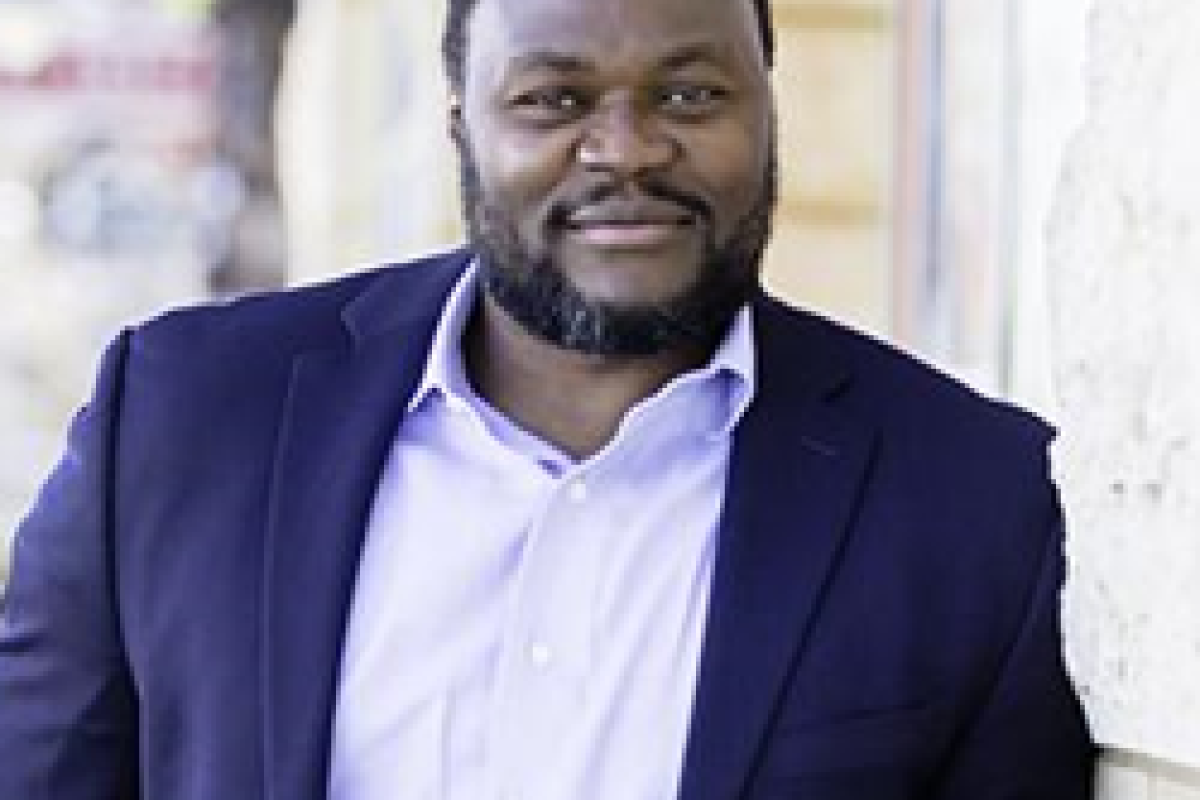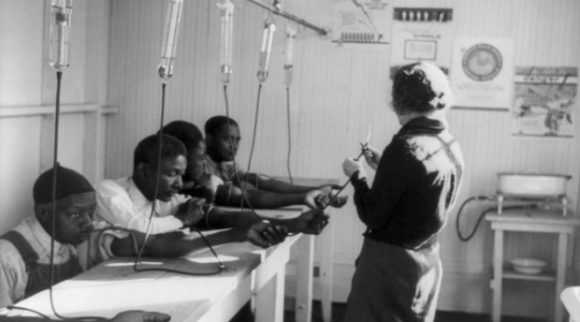The COVID-19 pandemic has given us new awareness of a variety of social and health factors that make certain groups more vulnerable to disease and more responsive to treatments. Differences such as socioeconomic status, access to healthcare, race, gender, age, and weight, among other factors are now more visible than ever before. “And these differences sometimes can mean the difference between life and death," says Jude Ngang, director of Diversity and Representation in Clinical Research for Amgen.

Against a backdrop of racial justice movements that took off in summer 2020, discussions around COVID-19 vaccine testing and acceptance have also shed light on past transgressions in the medical world—historic cases that undermined public trust, especially among people of color, in the medical establishment. These converging forces are now catalyzing and accelerating efforts in the biotech industry to form a new type of relationship with patients and their communities, starting in research and development.
Traditionally, “things were very top down, with the people at the top deciding how research was going to be, and patients were at the bottom as the test subjects,” says Racquel Racadio, senior manager for Diversity and Representation in Clinical Research at Amgen. “It was more of a transactional concept” rather than a relationship. And the people at the top were not diverse due to historic restrictions limiting the ability of women and people of color to attend educational institutions and become physicians or scientists.

“Now we are trying to move toward patients and caregivers being the leaders in research,” Racadio says, while also making sure that both the patient populations and the clinical trials staff running the studies are more representative of the real world. The goal, she says, is to develop drugs in partnership with patients.
Racadio, Ngang, and others are working on a program at Amgen called RISE (Representation in Clinical Research) to change the system starting with a fundamental building block in research and development—the clinical trial. It is part of a shift toward a partnership model to help break a historically rooted cycle of mistrust and exclusion felt among many communities.
As COVID-19 vaccines have rolled out across the United States, trust has been an important tool in building more equity in medicine. A December 2020 survey by RAND found that only 42 percent of Black Americans, versus 63 percent of Hispanic or Latinx Americans and 61 percent of White Americans, said that they would definitely or probably get vaccinated. At the same time, compared with white Americans, Black Americans are 2.8 times, American Indians 3.5 times, and Hispanic or Latinx Americans 3 times more likely to be hospitalized due to COVID-19, according to the Centers for Disease Control (ratios updated in 2023)—underscoring the social factors that affect health.
Overcoming A Painful Legacy
A 2020 paper in the journal The Lancet details the long history of “medical racism and violence,” dating back to slavery in the United States. Vulnerable populations, including not only people of color but also people with mental health disabilities and others, were often taken advantage of in the name of research.
A stark example of these practices was the Tuskegee Syphilis Experiment, a 40-year study that began in 1932 to study syphilis in 600 Black men who were impoverished sharecroppers from Macon County, AL. Although penicillin to treat syphilis was available in 1947, and other treatments such as salvarsan were available as of 1908, study subjects were not provided or told of available treatments. And none of the men were informed of their diagnosis nor given the opportunity to give consent to the part of the study.
During the same time period, in the early 1950s, researchers from Johns Hopkins Hospital took samples of cancer cells from a Black woman named Henrietta Lacks. These cells would ultimately lead to major advances in immunology, oncology, and the development of the polio vaccine, yet Lacks never gave consent for her cells to be experimented on. She did not even know they were being studied by researchers, and the study of her cells continues to this day.
These examples of involuntary medical experimentation have contributed to Black Americans’ and other underrepresented minorities’ negative perceptions of the medical establishment, leaving a long legacy of mistrust.
“There have been some historic practices in medicine that when we look back, we see that things should have been done better or differently,” Ngang says. “But medicine continues to progress, and it’s important for people, regardless of background and especially students, to realize that medicine helps us all, and we can all be part of the teams that help shape the future of medicine.”
Indeed, Racadio says, as medicine has progressed, so too have research practices. Among many changes since the time of Lacks and the Tuskegee study are public health laws and clinical trial rules that ensure trials are run ethically and safely. These rules include IRBs (Institutional Review Boards) and other ethical review boards that are big committees of people, including patients and members of the public, who work to make sure that the research is safe as well as valuable, not only for science but also for people in general. Current regulations also stipulate that those participating in clinical trials can drop out at any time and that participants receive and sign informed consent forms detailing their involvement in the studies.
Acknowledging this tremendous progress as a result of historic cases of inequity and unethical practices in research is important, Racadio says, as are efforts to address the lasting distrust that stemmed from them. The work she and colleagues have undertaken, especially in the last year, is aimed to build new relationships with patients rooted in equity and trust.
Blazing a New Trail
For Racadio, representation is not only her professional focus but also a personal issue. Her work with RISE, which started evenings and weekends in her spare time while working on clinical trial site selection at Amgen, stems directly from her family’s tradition of community service in healthcare. A first generation American whose parents were both physicians and immigrants from the Philippines, it has been important to Racadio to see visible changes in representation across the research and development process. “As a brown female working in science, I am a minority in many ways,” Racadio says. “It’s a dream come true” for her to now have the resources to work on representation in research in a full-time position and in a way that will help people on a large scale. She is also currently finishing her Doctor of Public Health degree at the University of North Carolina at Chapel Hill, looking at how technology may improve racial and ethnic disparities in cancer clinical trials.
Similarly for Ngang, who started his career as a machinist working for Amtrak, the opportunity to work in biotech and on RISE is the culmination of a path he took to bring new perspectives to clinical research. An immigrant from Cameroon who came to the United States in his mid-20s, Ngang aggressively pursued educational opportunities in science, finding himself quickly “jumping socioeconomic circles” as he worked toward a Doctor of Pharmacy degree.
As a result, he saw firsthand how people with a variety of life experiences can be and wanted to make sure that that diversity of experience was reflected at each stage of research. Early in his work in pharmacy, for example, Ngang saw cases of Black people using a medication to treat hypertension and still having blood pressure that was too high. He then did research and realized that very few Black people were enrolled in the clinical trials to test that drug.
The RISE program aims to address that issue head on by improving diversity and bringing “proportionate representation” to clinical trials. The “proportionate” part is key, Racadio says, as it means that the people represented in clinical trials should match the people most likely to suffer from the disease in the real world. In other words, the percentage of Black women in a clinical trial for a drug to treat hypertension should match the percentage of Black women who suffer from hypertension in the real world rather than matching the population as a whole.
For example, she says, Black people represent 13% of the U.S. population but only 8% of clinical trial participants, according to the U.S. Food and Drug Administration; Hispanics are also similarly underrepresented in clinical trials. Cancer is a leading cause of death for Asian Americans, according to the Centers for Disease Control and Prevention, yet this population comprises only 3% of cancer clinical trial participants, Racadio explains.
“We are looking at the entire clinical trial process,” Racadio says, “starting with where people have been historically excluded from trials” to bring proportionate representation. Her team is then working across Amgen to (1) partner with clinical trials investigators and staff who are more representative of the participants they are trying to recruit; (2) bring the research directly to the communities where the participants live and work; and (3) change how researchers communicate with patients, caregivers, and providers, including working with patients directly to design new types of visuals and language. Finally, Racadio says, all this work requires working through a “lens of humility,” recognizing things they do not know yet and being open to community feedback.
“There is a large need to establish and maintain trust,” Ngang says, “and it starts with how we test the medicines and then goes all the way through to the words and channels we use to communicate that process to others.”
Bioethics in the Classroom
- To explore the legacy of the Tuskegee Study, how it led to the development of the institutional review board (IRB), and how researchers are working to diversify clinical trials, check out the ABE curriculum module Clinical Trials: From Disease to Medicine.
- To give students a glimpse of bioethics questions that are being debated today, check out the ABE pocket lessons, Changing Organ Donation with Biotechnology and Designing Babies with CRISPR.
